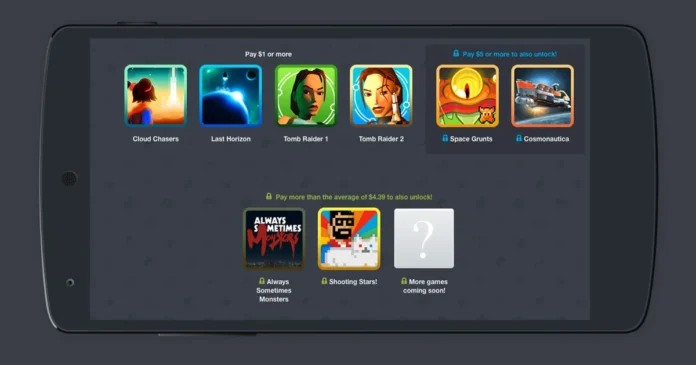The gaming world has undergone a remarkable transformation in recent years, with one of the most significant catalysts being the advent of smartphones. These pocket-sized devices, once primarily used for communication and productivity, have become powerful gaming platforms, revolutionizing how people play and experience games. In this article, we will explore the evolution of mobile gaming and how smartphones have reshaped the gaming world.
In an era where smartphones have become an essential part of our daily lives, it is no surprise that they have profoundly impacted various industries. One industry that has been particularly affected is gaming, as smartphones have given rise to a new breed of gaming experiences accessible to a broader audience than ever before. Once considered a casual and simplistic form of entertainment, mobile gaming has evolved into a legitimate and immersive gaming medium.
Early mobile gaming: A humble beginning

The journey of mobile gaming can be traced back to the early days of mobile phones. In the late 1990s and early 2000s, when mobile phones were primarily used for calls and text messages, a game called Snake debuted. Snake, a simple yet addictive game that involved maneuvering a snake to eat dots and grow longer, quickly gained popularity and became a staple on Nokia phones. While Snake may seem rudimentary by today’s standards, it marked the beginning of mobile gaming and laid the foundation for what was to come.
During this era, mobile gaming faced several technological limitations. The screens were monochromatic, and the processing power of mobile devices was limited. As a result, games were often simplistic and needed more visual fidelity and complexity found in traditional gaming platforms. However, despite these constraints, mobile gaming managed to captivate audiences with its accessible and on-the-go nature.
Advancements in mobile gaming technology
As mobile technology progressed, so did mobile gaming. Introducing color displays and improved smartphone graphics capabilities opened up new possibilities for game developers. Suddenly, games became more visually appealing and engaging, drawing players into immersive worlds and captivating storylines.
However, the true revolution came with the introduction of touchscreen technology. Touchscreens transformed the way players interacted with games, replacing physical buttons and directional pads. This innovation allowed for intuitive and direct control, expanding the gaming experience beyond traditional controls. As a result, games like Angry Birds and Fruit Ninja became overnight sensations, showcasing the potential of touch-based gaming.
Furthermore, online slots have become no less popular with the advent of touch screens. We can say that the development of mobile technology influenced a sharp increase in the popularity of this type of entertainment. After all, many slot machines just the same are free, and you do not risk anything or offer the minimum deposits, for example, $1 casinority.com/nz/1-dollar-deposit.
Many players have turned to online slots precisely because of their wide thematic variety. The same popular mobile game Fruit Ninja has also migrated to online slots due to its popularity and has repeated its overwhelming success in online casinos
App stores and the democratization of mobile gaming

While technological advancements were crucial for the evolution of mobile gaming, the introduction of app stores truly revolutionized the industry. In 2008, Apple launched the App Store, followed by Google Play Store for Android devices. These platforms provided a centralized marketplace where developers could distribute their games directly to consumers, bypassing the need for physical distribution.
The app stores brought unprecedented access to mobile gaming. Gamers now had a vast array of games at their fingertips, with easy browsing, downloading, and updating capabilities. This democratization of mobile gaming allowed indie developers and small studios to compete on equal footing with larger, established gaming companies. In addition, it gave rise to a wave of innovative and unique games, catering to diverse interests and preferences.
Furthermore, the app stores introduced new monetization models, such as freemium and in-app purchases, which allowed developers to offer games for free while generating revenue through optional microtransactions. This shift in the business model made mobile gaming financially viable and sustainable, opening up new opportunities for developers to create and monetize their games.
Social aspects of mobile gaming
Mobile gaming transformed how we play games and revolutionized social interactions within the gaming community. With the proliferation of smartphones, multiplayer and social gaming experiences gained immense popularity. Players could now connect with friends and strangers alike, engaging in cooperative or competitive gameplay experiences.
The rise of mobile esports further cemented the social nature of mobile gaming. Competitive tournaments and leagues emerged, drawing in professional gamers and creating a new avenue for careers in gaming. Mobile games like PUBG Mobile and Clash Royale became esports sensations, with large-scale tournaments and dedicated fan bases.
Mobile gaming as a mainstream entertainment medium
What was once considered a niche form of entertainment has now become a mainstream phenomenon. Mobile gaming has grown beyond casual experiences to encompass AAA gaming titles that rival console and PC games in terms of graphics, gameplay, and depth. Games like Fortnite and Call of Duty Mobile have successfully brought the console-like experience to smartphones, attracting millions of players worldwide.
This shift has not gone unnoticed by traditional gaming console manufacturers. The impact of mobile gaming has prompted console companies to explore new strategies and adapt to the changing landscape. Some have embraced mobile gaming by developing companion apps or releasing exclusive mobile titles, while others have incorporated mobile gaming elements into their existing consoles.
Mobile gaming and augmented reality (AR)

Another significant development in the evolution of mobile gaming is the integration of augmented reality (AR). The groundbreaking success of Pokémon Go in 2016 demonstrated the potential of AR in gaming. By blending the virtual world with the real world, players could embark on adventures, catch virtual creatures, and explore their surroundings unprecedentedly.
The success of Pokémon Go paved the way for more AR gaming experiences, and developers continue to experiment with this technology. AR has the potential to transform mobile gaming by merging the digital and physical realms, offering unique and immersive experiences that go beyond the confines of a screen.
The future of mobile gaming
Looking ahead, the future of mobile gaming appears to be incredibly promising. One exciting development is the rise of cloud gaming, which eliminates the need for high-end hardware by streaming games directly to smartphones. This technology allows players to access a vast library of games without the limitations of storage or processing power.
Additionally, emerging technologies like virtual reality (VR) are gradually making their way into the mobile gaming landscape. With devices like the Oculus Quest and other VR headsets becoming more portable and accessible, the integration of VR with mobile gaming is on the horizon. This fusion has the potential to create truly immersive and transformative gaming experiences.








